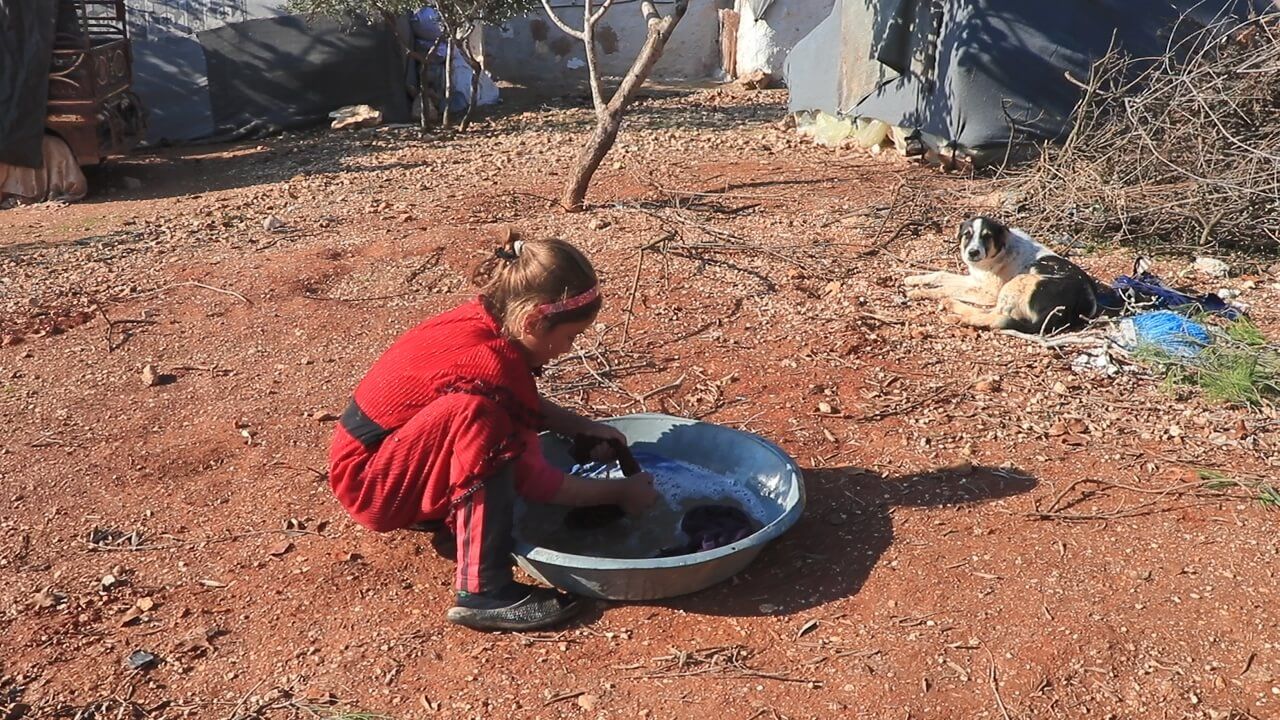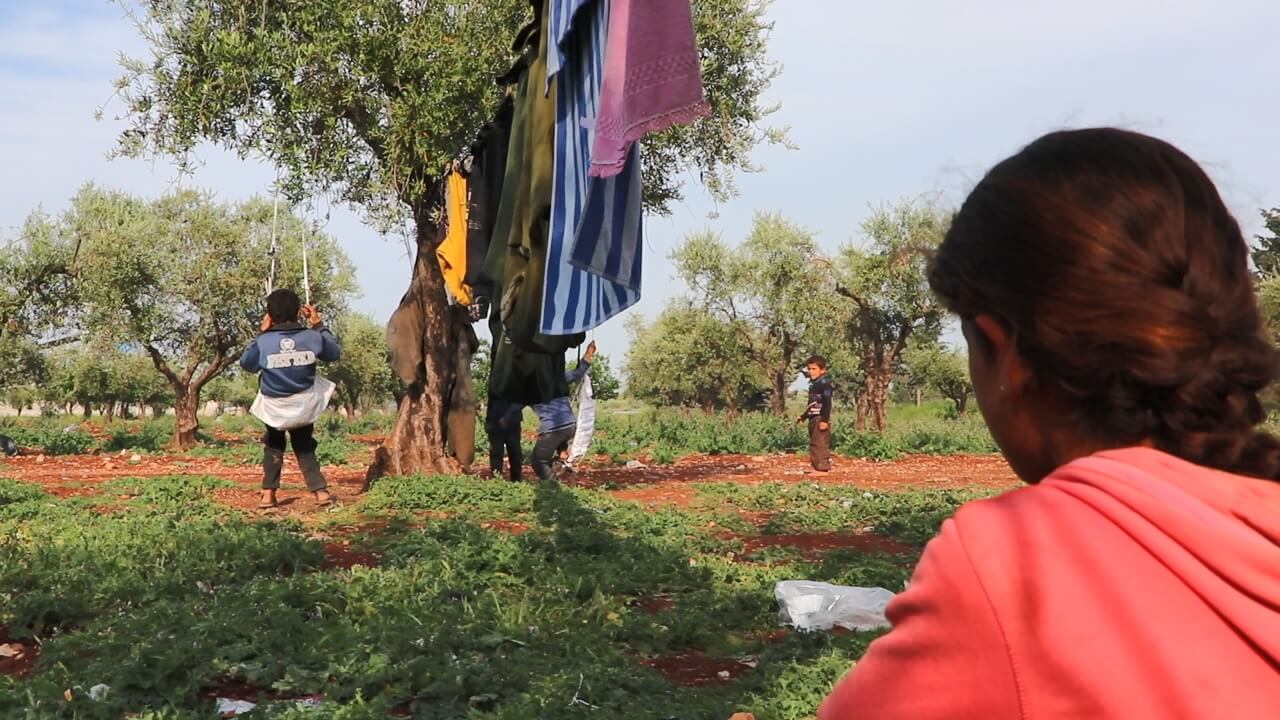Millions are displaced within and beyond political boundaries, mostly due to conflicts. The displaced people get settled in camps that lack basic amenities. The problems that they face with respect to food, water and sanitation are exacerbated due to climate-induced extreme weather events, as seen in Syria, writes Toka Mahmoud.
In 2015, UNHCR, the UN Refugee Agency (UNHCR), reported that the number of displaced people had reached its highest, even surpassing that after World War II. The number of people displaced due to conflicts, violence and events disturbing public order was 65.3 million in 2015, according to the UN annual Forced Displacement Report.
By the end of 2020, displaced people numbered 82.4 million, including people who have been displaced for the first time and people who have been displaced more than once. A total of 11.2 million people had to flee their homes in 2020 and 11 million in 2019 alone.
Due to several ongoing crises, the number of displaced people has doubled in the last decade, increasing the ratio of forced displacement to 1 in every 95 people in 2020, compared to 1 in 159 in 2010, as per the report.
About 42% of the displaced people are children under 18 years old. According to UNICEF, the number of forcibly displaced children by the end of 2020 was 33 million. This included 12.6 million refugees, 1.4 asylum seekers and 19.4 million children displaced within their own countries due to conflicts and violence. An additional 2.1 million children were displaced due to natural disasters.



Issues in displacement camps
Although UNHCR recommends that each refugee receives more than 2,100 calories per day, most camps do not have sufficient and sustainable food supply for their populations. As a result, many reviews conducted by UNHCR showed cases of acute malnutrition in displacement camps. Even in camps where food supply is sufficient, caloric intake is reduced as inhabitants often sell their food rations for other goods they desperately need.
It is not only the quantity of food that is insufficient. The lack of food variety, fruits, and vegetables causes many refugees to suffer from deficiencies in essential vitamins and minerals, which can lead to a variety of diseases. UN reviews showed that many children had to fight for food in overcrowded displacement camps. Consequently, many of these children suffer from psychological problems.
Issues relating to water, sanitation and hygiene (WASH) are extremely prominent in displacement camps and may include water quantity and quality, waste and excreta management and insufficient hygiene products.
In emergency settings, WASH-attributable diseases such as diarrhoea, malaria and cholera are estimated to cause 40% of deaths among camp inhabitants and 80% of deaths among child residents under two years old. Many studies have highlighted the increasing rate of morbidity and mortality following mass displacement and disasters.

Displacement and climate change
The Syrian internal displacement crisis illustrates how the impacts of climate change can render the harsh conditions within displacement camps more severe. Displacement due to the Syrian war accounts for 5.6 million registered refugees, including 2.5 million children and 6.2 million internally displaced people – those displaced within political borders.
Syria is a country on the east coast of the Mediterranean Sea in southwestern Asia, an area that is vulnerable to climate change. Between the 1970s and 1990s, Syrian farmers benefited from the relatively fertile lands.
However, the country has been hit by three major droughts since the 1980s. The most recent of these droughts lasted from 2006 to 2010. This was recorded to be the worst multi-year drought in around 900 years. Some scholars even linked climate change to the ongoing war in Syria. This argument, however, is highly debatable.
After being forced to flee the war, millions of Syrians have another reality to endure within the camps they currently inhabit. Among the impacts of climate change in Syria are intense heat waves, extreme storms and long droughts. With every change in the weather, camp residents find themselves in trouble.
Furthermore, not all camp settlements in north-western Syria are registered; thus, not all camps receive humanitarian assistance. As a result, communal WASH blocks, containing toilets and showers, are absent in unregistered camps. Instead, residents dig their own pit latrines besides their tents. And to provide some kind of privacy, residents surround latrines with light cloth.
Due to the absence of proper digging material and professional workers, latrines are poorly made, do not meet minimum humanitarian standards and are highly susceptible to surges. Not to mention insect gathering and irritating smells, rendering camps highly prone to WASH-attributable diseases.

During heat waves, residents have no means to tone down the suffocating heat. Tents in unregistered camps are made of low-quality light cloth with no insulation to block the direct sunrays. Heat problems magnify due to water scarcity. Water supply is particularly scarce in Syria. The country experiences periods of drought that are further amplified due to climate change.
According to ReliefWeb, a humanitarian information portal, hundreds of thousands of children are thirsty, dehydrated and vulnerable to disease due to water shortages. Not to mention the hardships residents face to get water for their daily routines. According to UN figures, 27% of households spend as much as one-fifth of their income on water from street vendors. Furthermore, the water sold is from unknown sources and lacks safety standards.
During storms the tents do no hold against the rain. Many UN and broadcast reviews reported that even water proof tents provided by UNHCR sometimes do not withstand heavy storms. As a result, many inhabitants find themselves literally without a roof over their heads during storms and end up getting soaked in their beds.
An example of this is the devastating flood that hit north-western Syria in January. On 25 January, 2021, media reported that heavy rain and snow along with strong winds and flooding in north-western Syria had forced more than 20,000 displaced people to abandon their tents, while 87 camp sites turned into lakes.
Another report on the 19 January, 2021 stated that a child had died and thousands of people were forced to sleep in the open after destruction of their temporary tents in Idlib province, north-western Syria.




Moreover, camps in north-western Syria have insufficient or no infrastructure utilities. This means that the problem that starts with a storm continues in the form of muddy roads and damages to the inadequate water and sanitation facilities they have. Damages include malfunction to water facilities such as water taps and tanks, and sewage overflow, making camps fertile ground for various diseases.
The impact of the environment the displaced people live in are not limited to physical health hazards. How does one expect someone living in such environments to thrive in any form, be it education or work. And how could these environments generate emotionally stable men and women who could contribute positively to the world.
Reality has shown that forced mass displacements are seldom temporary. Filippo Grandi, UN High Commissioner for Refugees, has stated, "We are witnessing a changed reality in that forced displacement nowadays is not only vastly more widespread but is simply no longer a short-term and temporary phenomenon."
Accordingly, shifting humanitarian assistance from emergency short-term responses to sustainable and resilient solutions, including provisions of WASH facilities, is highly needed and indispensable.





